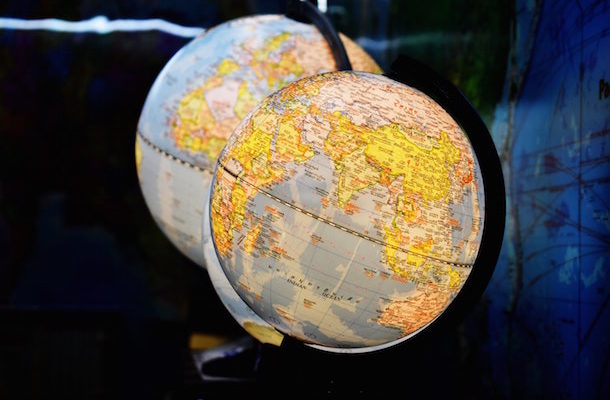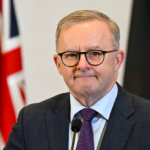Cyber-threats rank high in new WEF Global Risk Report

The World Economic Forum’s Global Risks Report for 2018 highlights the threats which cyber-crime, environmental degradation and political turmoil pose to the planet and its 7.6 billion citizens.
The World Economic Forum’s Global Risks Report for 2018 highlights the threats which cyber-crime, environmental degradation and political turmoil pose to the planet and its 7.6 billion citizens. It warns that as the pace of global change accelerates, and the interconnection of economic, political and environmental problems intensifies, the prospect of concerted action is dwindling at the very time it is most required.
The new report notes that last year’s edition emerged at a time of heightened global uncertainty and growing popular discontent with the existing political and economic order. The report called for “fundamental reforms to market capitalism” and a rebuilding of solidarity within and between countries as a result.
One year on, it argues that the global economic recovery under way offers new opportunities for progress that should not be squandered but warns that the urgency of facing up to systemic economic, environmental, social and political challenges has, if anything, intensified amid proliferating indicators of uncertainty, instability and fragility.
Humanity has become remarkably adept at understanding how to mitigate conventional risks that can be relatively easily isolated and managed with standard risk-management approaches. Unfortunately we are much less competent when it comes to dealing with complex risks in the interconnected systems that underpin our lives, from social organisations and commerce to the digital realm and the natural environment.
The report points to increasing signs of strain in many of these systems and expresses concern that the bewildering pace of change is testing the absorptive capacities of institutions, communities and individuals to cope. When risk cascades through a complex system, the danger is not of incremental damage but of “runaway collapse” or an abrupt transition to a new, and perhaps dystopian, status quo.
Economic Recovery
Headline economic indicators suggest the world is finally getting back on track after the global crisis that erupted 10 years ago, despite the mismanaged struggles of some nations. However this upbeat picture masks continuing underlying concerns. The global economy faces a mix of long-standing vulnerabilities and newer threats that have emerged or evolved in the years since the crisis.
The familiar risks include potentially unsustainable asset prices, with the world now eight years into a bull run; elevated indebtedness, particularly in China; and continuing strains in the global financial system. Among the newer challenges are limited policy firepower in the event of a new crisis; disruptions caused by intensifying patterns of automation and digitalisation; and a build-up of mercantilist and protectionist pressures against a backdrop of rising nationalist and populist politics.
Political Crisis
The aggressive stance taken by expansionist dictatorships such as Russia and China against their neighbours and the continuing wild-card threat posed by rogue states such as North Korea means the world has moved into a new and unsettling geopolitical phase, despite the welcome and hard won defeat of ISIS jihadists in the war-torn middle east.
The report is concerned that that peaceful, multilateral rules-based approaches of the post-war era have been fraying as many leaders have sought to entrench themselves in power by re-establish the state as the sole locus of legitimacy. While this is an attractive option for despots of all kinds, as well as popular with electorates fearful of globalisation and immigration, it leaves smaller states vulnerable to bullying or squeezed by the shifting of geopolitical sands.
The report sees little hope that existing norms and institutions, or new bodies or rules, will bring the world’s squabbling major powers to consensus. This vacuum creates new risks and uncertainties as rising military tensions, economic and commercial disruptions and destabilising feedback loops between changing global conditions and countries’ domestic political conditions threaten to boil over beyond control.
International relations now play out in increasingly diverse ways. Beyond conventional military build-ups, these include new techniques of cyber-warfare, reconfigured trade and investment links, proxy conflicts, changing alliance dynamics, and potential flash points related to the global commons. Assessing and mitigating risks across all these theatres of potential conflict will require careful scanning of the horizon and crisis anticipation by both state and non-state actors.
Cyber Security
While the major powers still refrain from overt military conflict, undeclared cyber-war on democratic nations is an increasing threat to their stability while criminal activity continues to harry individuals and companies. Attacks from all sources are growing both in number and their disruptive potential and threaten to undermine the benefits which the internet might bring. Attacks against businesses have almost doubled in five years, for example, and incidents that would once have been considered extraordinary are becoming more and more commonplace.
The financial impact of cybersecurity breaches is increasingly severe, and some of the largest costs in 2017 related to ransomware attacks, which accounted for 64% of all malicious emails. Notable examples included the WannaCry attack—which affected 300,000 computers across 150 countries—and NotPetya, which caused quarterly losses of US$300 million for a number of affected businesses and threaten to undermine public trust in the digital realm.
Hostile authoritarian nations already attempt to undermine their democratic rivals through ‘fake news’ while the use of cyberattacks to target dissenters, critical infrastructure and strategic industrial sectors in Ukraine and elsewhere raises fears that, in a worst-case scenario, attackers could trigger a breakdown in the systems that keep all advanced western societies functioning.
Environmental Deterioration
Whatever the political squabbles of the day, and the growing importance of the virtual realm, it is the natural environment on which we ultimately depend on for survival. Environmental risks continue to intensify in all categories in both the short and long term. 2017 saw a succession of high-impact hurricanes, bush fires and extreme temperatures and the first rise in CO2 emissions for four years. The report warns that humanity is ‘pushing our planet to the brink’ and the damage being done is increasingly threatening mankind’s survival as well as the rest of the natural world.
Biodiversity is being lost at mass-extinction rates as habitats are cleared for agriculture and insect and bird populations collapse in the wake of global warming, pollution and pesticides. Agricultural systems are under strain as a result and smog has become an increasingly pressing threat to human health in the fast growing cities of Asia. Australia remains one of the worst offenders, despite its ‘clean and green’ image, given its rampant land clearing and continuing reluctance to repudiate coal fired power generation.
Despite the worsening ecological crisis, the world-wide trend away from multilateral co-operation towards nation-state unilateralism in geo-political issues may also make it more difficult to sustain the comprehensive long-term responses that are required to counter global warming and other common threats which transgress mere political borders.
Future Shocks
This year’s Global Risks Report also introduces three new themes of Future Shocks, Hindsight and Risk Reassessment. These aim to broaden the report’s analytical reach, which each of these elements offering a new lens through which to view the increasingly complex world of global risks.
The section on Future Shocks offers a warning against complacency and a reminder that risks can crystallise with disorientating speed. In a world of complex and interconnected systems, feedback loops, threshold effects and cascading disruptions can lead to sudden and dramatic breakdowns. It offers 10 such potential breakdowns— from famine and fish stock collapses to political and economic turmoil — as food for thought for remedial action.
The chapter on Hindsight revaluates the risks analysed in previous editions of the Global Risks Report, tracing the evolution of the risks themselves and the global responses to them.
Revisiting past reports in this way allows the success of risk-mitigation efforts to be assessed and highlights lingering issues that might warrant increased attention. Themes such as antimicrobial resistance, youth unemployment, and the “digital wildfires” described in 2013 which bear close resemblance to what is now termed “fake news”.
In the concluding Risk Reassessment section, a range of risk experts share their insights about the implications of new concepts of risk for decision-makers in businesses, governments and civil society. Roland Kupers writes about fostering resilience in complex systems, for example, while Michele Wucker calls for organisations to pay more attention to cognitive bias in their risk management processes.

Open Forum is a policy discussion website examining the social, political, economic, cultural and environmental issues of today. We welcome contributions and invite you to follow us on Twitter, Linkedin, Federated Press and Vivaldi Social. We #StandwithUkraine.














